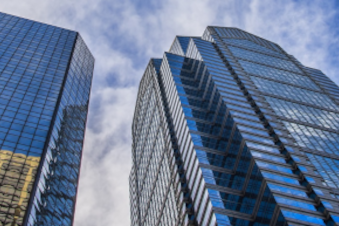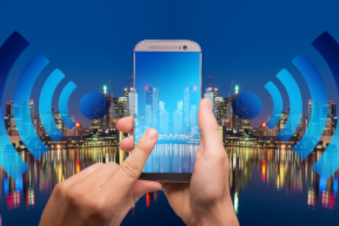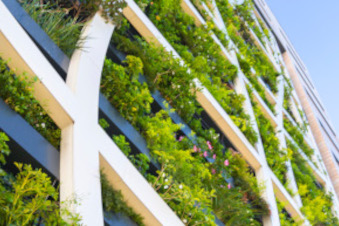Introduction
Today more and more buildings are designed, built and renovated according to Smart Building principles, to obtain intelligent and automated spaces for residential, commercial and corporate use. For this type of intervention, the Internet of Things plays a decisive role. It is thanks to the possibility provided by the IoT to make all systems interconnected that it is possible to collect a lot of data useful for making informed decisions. The importance of the Internet of Things in this field is also confirmed by the estimates of ABI Research according to which the value deriving from IoT technology for smart buildings will exceed $8 billion in 2020.
It is thanks to the IoT that not only new buildings, built ad hoc, can be smart, but even older buildings can become smart.
In fact, thanks to new technologies, sensor networks can be installed and updated with ever greater simplicity and flexibility, even in pre-existing buildings.
BlueUp MeshCube solution
is the perfect example of how new technologies can help in terms of retrofitting.
This solution is totally wireless and cableless, and this means that no intervention at the building infrastructure level is required.
Thanks to the MeshCube platform, it is possible to easily implement asset tracking, micro-climate monitoring, lighting and "smart window", indoor navigation,
room presence monitoring, security, access control functions.
Thanks to this solution, even the oldest building will have the opportunity to become smart.
This retrofit possibility translates into a great opportunity for realities which, like Italy (one of the countries with the oldest buildings of Europe),
require a redevelopment of the buildings. In this regard, it is precisely the redevelopment of buildings that
could drive the development of smart buildings in Italy. In fact, as reported by
the Energy&Strategy Group report of Polimi,
in 2019 smart buildings received investments of as much as 8 billion.
Smart Readiness Indicator
In 2018, the European directive relating to the Energy Performance Building
introduced an indicator with which to measure the digital performance of a building, called
Smart Readness Indicator. This indicator
makes possible to establish how much these buildings improve in terms of energy efficiency and performance thanks to the adoption of smart
technologies. In the future, this indicator could become the tool for implementing the certification of a building's status in terms of "digital
readiness", encouraging the adoption of smart technologies for energy efficiency, sustainability, health and people's well-being, with probable
positive effects on the supply chain and on the attractiveness of the real estate market.
The evaluation of the smartness of the building is currently mainly focused on the energy aspect, abut underestimates other factors, equally
important, such as health, well-being, safety and integration of services. In the future there will be the need to redefine some steps to
ensure a 360° assessment of the smartness of the building.
The nervous system of Smart Buildings
Smart Buildings make possible to reduce environmental impacts and save on energy costs, with intelligent and user-friendly solutions. With Building Automation systems, most of the processes are managed by a centralized control unit and the systems can be controlled remotely on different mobile devices through specific apps or platforms.
The main functions of Building Automation are keeping the heating, cooling, ventilation and humidity level of the rooms within a certain range. In addition to this, the ambient lighting is calibrated according to an occupancy schedule. A Building Automation system should also be able to monitor the performance and detect potential failures of each user and alert building managers of malfunctions, but also notify dangerous situations for those inside the building.
So we can imagine a Smart Building controlled by Building Automation as a "living being"
that adapts to changing conditions. The lights come on when it's dark and there are people in the room, otherwise they go off.
The air vents are activated according to the needs of the occupants. Air conditioning systems react to the indoor climate of the various rooms.
The "senses" of this living being, which help him perceive the world, are represented by sensors, such as, for example, motion sensors,
which suggest turning off the lights when no one is in the room. Or the brightness sensors, which detect the level of sunlight in the room,
making sure that the system adjusts the lighting accordingly. Or again, the temperature sensors, which measure the variations in air temperature,
to switch heating/cooling systems on and off only when actually necessary.
The network of sensors that is created could therefore be seen as a kind of nervous system of our "living" building.
But what are the steps to develop this nervous system?
In order for a building to become "smart", four components that interact and communicate with each other must generally be considered.
- 1. Sensors: sensors are devices that can provide various information. For example,
they can keep track of humidity, temperature, pressure and CO2 levels in a room, or of lighting levels,
the number of people present in a certain room, or monitor localized alarm events. After collecting this
information, the sensors transmit it to the controllers.
- 2. Communication protocols: these systems use a specific language
to connect each individual component. Protocols help each component send and receive
information to adjust settings and execute commands.
- 3. Controllers: they represent the brain of the building automation system.
They collect all the information from the sensors and, based on it, send commands to connected systems,
such as air conditioning, lighting and others.
- 4. Operator Interface: the operator interface allows users to access and operate the
system, helps users understand the information transferred between components, and provides the opportunity to make manual adjustments.
Examples of smart buildings and achievements
The last few years have provided us with interesting examples of Smart Buildings. Let's see some examples of smart buildings already present in the world, a source of inspiration for future progress in the Smart Building field.
The Edge (Amsterdam, Netherlands)
The Edge in Amsterdam is globally recognized as the smartest building in the world. It was initially planned to have an area of 100,000 square meters. Thanks to smart solutions for managing the space has been reduced to just 60,000 m2, saving almost half of the production costs. Thanks to the more than 28,000 sensors and actuators installed in the building to manage the flow of energy and data, the air conditioning system and the operation of other systems can be easily monitored and controlled via display. Even the lighting is intelligent and thanks to the use of IoT sensors a Light-as-a-Service system is applied. Deloitte, the main tenant of The Edge, has exploited the large amount of data collected to transform it into useful information and more efficient services. For example, the ability to interact with employees, the presence or absence of people in the rooms is analysed, translating everything into an optimization of consumption. One of the distinguishing features of this building are the LED panels which require so little electricity flow that they can be powered using the same cables that carry data for the internet. Thanks to the detection of the presence of people inside the building and to the systems integrated in the IoT, temperature and lighting are continuously modulated according to needs. The Edge also has 6,000 square meters of solar panels, which help meet the energy supply of the structure. Each employee is connected to the building via an app on their smartphone. The app suggests users where to find parking, free desks or other colleagues, and allows them to report problems to those who manage the facilities. The Edge is widely recognized as a smart building. It produces more energy than it consumes, through efficiency measures and solar energy generation, and the BREEAM Building Standard assigned the structure a 98.4% sustainability score, the highest ever awarded.
The Crystal (London, UK)
The Crystal in London is one of the most sustainable buildings in the world. It is a place designed to host events, with seven equipped meeting rooms, a state-of-the-art auditorium and other spaces. The building is 100% electric and the solar panels on the roof generate about 20% of its needs. The building's energy management system controls all electrical and mechanical systems, including heating, cooling and ventilation systems, lighting, and photovoltaic panels. Compared to other office buildings of the same size, carbon emissions are estimated to be around 70% lower, while energy costs are halved.
Duke Energy Center (Charlotte, Usa)
The Duke Energy Center is a 51-story skyscraper that houses Duke Energy, one of the largest electricity companies in the United States. The building boasts the highest green certification, LEED Platinum. It is capable of reusing over 35 million liters of water each year (including groundwater, rainwater and condensation from air conditioning systems), which meets approximately 80% of the cooling tower water needs and 100% of the irrigation needs. The interiors are equipped with curtains that move with the movement of the sun, so as to reflect the light deep into the work areas. The exterior was designed to look like a crystal and includes more than 45,000 LED lights that illuminate the building at night, displaying a light show at the top of every hour.
Burj Khalifa (Dubai, Emirati Arabi)
The Burj Khalifa in Dubai, 830 meters high and 163 floors, is the tallest skyscraper in the world. Thanks to its levels of automation it is also one of the smartest and most sustainable buildings in the Middle East. The automation system transmits real-time information to the IoT platform, which uses intelligent algorithms to identify anomalies and maintenance issues. Facility managers can thus use this information to improve building maintenance and the reliability of all systems. Since the launch of this system, maintenance hours at the Burj Khalifa have been reduced by 40%.
Glumac (Shanghai, Cina)
Glumac in Shanghai is a company specializing in the sustainable design of commercial, institutional, technological and healthcare structures and its headquarters was the first to be certified LEED Platinum v4 in East Asia and was the first in Asia to achieve the Net-Zero Energy, Water and Carbon. At Glutac, the main focus is air quality. The building is equipped with an indoor air monitoring system (levels of oxygen, volatile organic compounds, particulate matter and humidity are checked) which transmits data directly to employee's mobile phones. Thanks to its five air purification systems and a green wall that filters pollution from outside, this building boasts the best air quality in Shanghai.
The future of Smart Buildings
Smart buildings help build a better future. Thanks to IoT sensors, energy efficiency and maintenance will be improved by reducing costs and waste, and the working environment will also become more comfortable. It is worth noting that, as emerges from a recent research conducted by Fortune Business Insight that made the economic point of view on the sector of technologies intended for intelligent buildings, the global Smart Building market reached 67.60 billion dollars in 2021. The forecast is that the market will grow to $80.62 billion in 2022 and on 328.62 billion dollars by 2029. The prospects for the future are therefore positive, since the market seems to view these new technologies with optimism. Features that reduce energy consumption and environmental impacts will be increasingly in demand and the emergence of 5G and the rise of Smart City projects will offer new opportunities for the development of smart building.
If you want to discover BlueUp IoT solutions and technologies, contact us. We will be happy to help you! 😊
Related content



